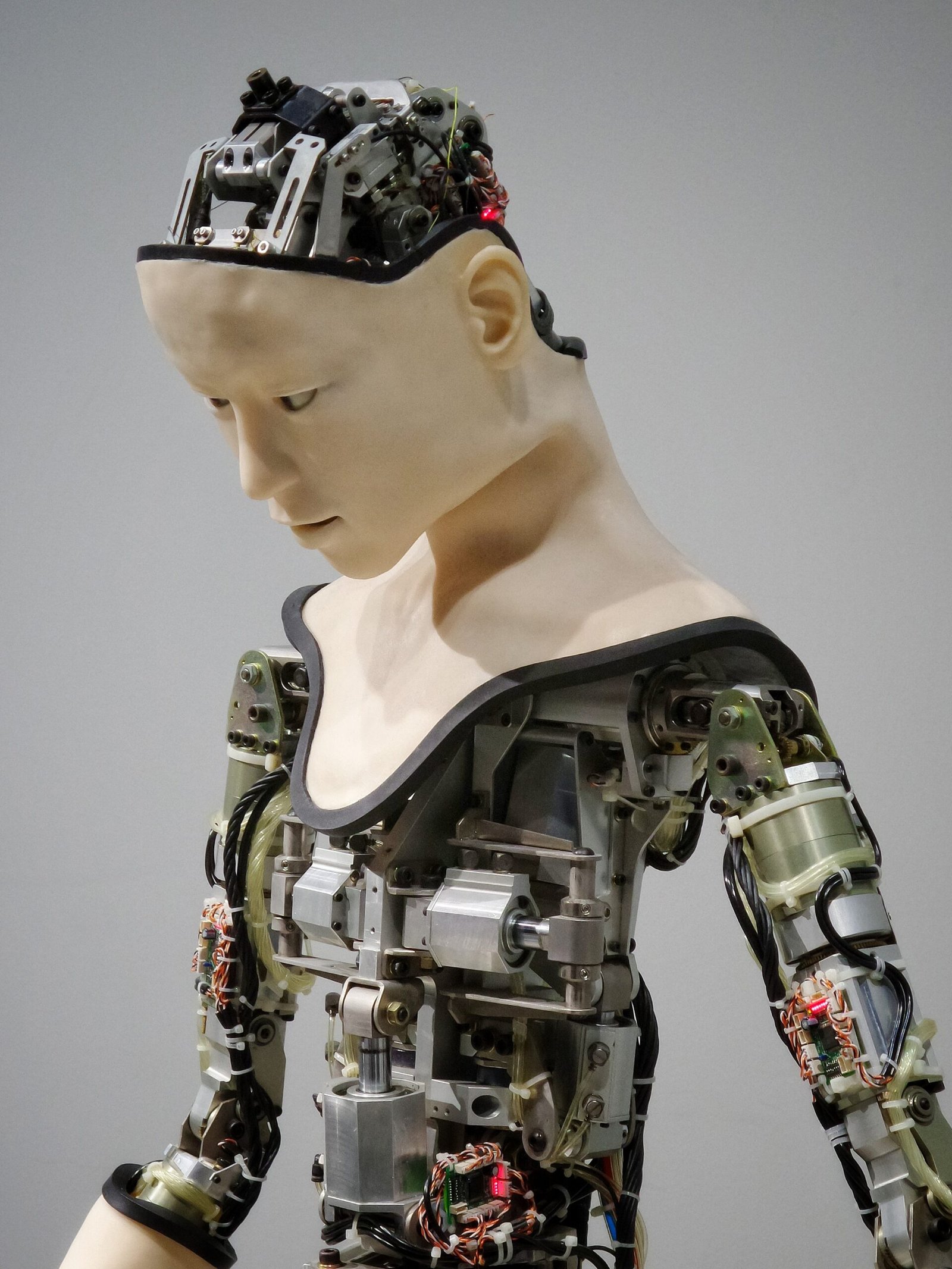Artificial intelligence (AI) has become an increasingly prevalent topic in today’s tech-driven world, with its potential to revolutionize industries and reshape our daily lives. As AI continues to advance at an astonishing pace, questions arise about the need for regulation to ensure it is deployed ethically and responsibly. This article aims to shed light on practical approaches to regulating AI, focusing on the importance of transparent standards, collaboration between stakeholders, and striking a delicate balance between innovation and security. So, if you’ve ever wondered how we can effectively govern this powerful technology, read on to discover valuable insights and practical solutions for the regulation of artificial intelligence.
Defining Artificial Intelligence
Definition of Artificial Intelligence
Artificial Intelligence (AI) is a branch of computer science that involves the development of intelligent machines capable of performing tasks that would typically require human intelligence. These machines are designed to exhibit characteristics such as understanding natural language, reasoning, learning, problem-solving, and adapting to new situations. AI systems can analyze massive amounts of data, make decisions, and perform complex operations with minimal human intervention.
Types of Artificial Intelligence
There are various types of AI, each categorized based on their capabilities and functions. The two main types of AI are:
-
Narrow AI: Narrow AI, also known as Weak AI, refers to AI systems designed for specific tasks and limited domains. These systems are trained to perform a single function or solve a specific problem, such as language translation, image recognition, or playing chess. Narrow AI is prevalent in our daily lives and is often used in virtual assistants, recommendation systems, and various online services.
-
General AI: General AI, also known as Strong AI or Artificial General Intelligence (AGI), aims to replicate human-level intelligence in machines. General AI systems would possess the ability to understand, learn, and perform any intellectual task that a human can do. While still a theoretical concept, the development of General AI raises significant ethical and regulatory concerns due to its potential impact on society.
Need for Regulation
Risks and Challenges of Unregulated AI
As AI technology continues to advance rapidly, there are growing concerns about the risks and challenges it poses when left unregulated. Some of the major risks include:
-
Ethical Concerns: AI systems can make biased decisions, perpetuate existing inequalities, invade privacy, and compromise individual rights if not regulated properly. For example, facial recognition algorithms have been shown to have higher error rates for people of color.
-
Security Threats: Unregulated AI can be potentially weaponized, leading to cyber-attacks, privacy breaches, and the creation of advanced autonomous weapons systems that could endanger human lives.
-
Job Displacement: Automation driven by AI can lead to job losses and significant disruptions in various sectors, affecting the livelihoods of workers. Without proper regulation, this transition can be chaotic and exacerbate social inequalities.
Importance of Ethical and Responsible AI Use
Regulating AI is essential to ensure ethical and responsible use of this powerful technology. By establishing clear guidelines and frameworks, we can address the risks associated with AI while maximizing its benefits. Ethical and responsible AI use involves:
-
Ensuring Transparency: AI algorithms and decision-making processes should be transparent and explainable to build trust and allow for proper scrutiny.
-
Accountability and Liability: Clear frameworks should outline the responsibilities and liabilities of AI developers, users, and operators, addressing issues of accountability when AI systems cause harm or make erroneous decisions.
-
Privacy and Data Protection: AI systems often rely on vast amounts of data, requiring robust measures to protect individuals’ privacy and prevent misuse or unauthorized access to personal information.
-
Fairness and Bias Elimination: Regulations should prevent AI systems from perpetuating biases based on race, gender, or other sensitive attributes. Algorithms should be designed, tested, and audited to ensure fairness and minimize discrimination.

Current Initiatives in AI Regulation
National and International Efforts
Governments and international bodies are increasingly recognizing the need for AI regulation and are taking steps to address this issue. Several countries have released national AI strategies outlining their vision for AI development and regulation. For example, the European Union issued a white paper proposing AI regulation, while countries like Canada, Germany, and Singapore have also launched initiatives to develop ethical AI guidelines.
At the international level, organizations like the United Nations and the Organization for Economic Cooperation and Development (OECD) are actively engaging in discussions on AI governance and regulation. The establishment of the Global Partnership on Artificial Intelligence (GPAI) further signifies the global effort to coordinate regulations and policies.
Regulatory Bodies and Organizations
To effectively regulate AI, the establishment of dedicated regulatory bodies and organizations is crucial. These entities have the authority and expertise to oversee AI development and ensure compliance with ethical and legal standards. Examples of such bodies include:
-
AI Regulatory Authorities: Governments can establish specialized agencies or bodies responsible for overseeing AI research, development, and deployment. These authorities can set standards, issue guidelines, certify AI systems, and enforce compliance with regulations.
-
Industry Alliances: Collaboration between industry stakeholders, including technology companies, academia, and civil society, is vital for developing industry-specific regulations and guidelines. Initiatives like the Partnership on AI bring together prominent organizations to foster responsible AI development and deployment.
Key Principles for AI Regulation
Transparency and Explainability
Regulations should require AI developers to provide clear documentation and explanations of how their systems work. Users should understand the algorithms’ decision-making processes, increasing transparency and enabling external audits and scrutiny. This transparency helps build trust and ensures that AI systems are accountable and do not make discriminatory or biased decisions.
Accountability and Liability
Clear guidelines are needed to define the responsibilities and liabilities of AI developers, users, and operators. When AI systems cause harm or make erroneous decisions, there should be mechanisms in place to hold individuals and organizations accountable. This can involve establishing legal frameworks that outline liability for damages caused by AI systems’ actions.
Privacy and Data Protection
AI systems often rely on large amounts of personal data. Regulations should address privacy concerns, requiring organizations to obtain informed consent and implement proper measures to protect individuals’ privacy. Data protection standards, such as those outlined in the General Data Protection Regulation (GDPR), should be adapted and enforced in the context of AI.
Fairness and Bias Elimination
To ensure fairness, regulations should prevent AI systems from perpetuating biases based on race, gender, or other sensitive attributes. Algorithmic audits and testing should be conducted to identify and rectify any biases present in AI systems. Developers should strive to design algorithms that are fair, unbiased, and inclusive.

Regulating AI Development and Deployment
Testing and Certification
Regulations should mandate rigorous testing and certification processes for AI systems before they are deployed. Independent third-party testing organizations can verify that AI systems meet specific quality standards, ethical guidelines, and safety requirements. Certification plays a crucial role in building trust and ensuring that AI products and services are developed responsibly.
Risk Assessment and Impact Studies
Before deploying AI systems in critical domains, regulations should require comprehensive risk assessments and impact studies. These assessments evaluate potential risks, such as algorithmic bias, security vulnerabilities, and unintended consequences. Impact studies examine the broader societal, economic, and ethical implications of AI deployment, enabling informed decision-making.
Framework for Ethical AI Design
Regulations should encourage the adoption of ethical AI design principles. Developers should be guided by established frameworks that promote responsible and human-centric AI development. These frameworks could include considerations such as the potential impact on societal values, human rights, and the environment. Ethical AI design ensures that AI solutions align with societal needs and values.
Governance Models for AI Regulation
Centralized Regulatory Authority
One approach to AI regulation involves establishing a centralized regulatory authority responsible for overseeing AI development and deployment. This authority would define regulations, set standards, conduct audits, and enforce compliance. A centralized model ensures consistency and uniformity in AI regulations but may face challenges in keeping pace with rapidly evolving technology.
Collaborative International Efforts
Given the global nature of AI, collaborative international efforts are crucial for effective regulation. International organizations and consortia can work together to harmonize regulations, share best practices, and address cross-border AI challenges. Collaborative efforts ensure a broader perspective, increased expertise, and the ability to address transnational issues effectively.
Self-Governance with Oversight
Self-governance, backed by regulatory oversight, involves industry players and experts developing their own sets of guidelines and best practices. This model allows flexibility and agility in adapting to evolving AI technologies and applications. However, regulatory oversight ensures that self-governance is aligned with societal values, preventing abuses and maintaining ethical standards.

AI Regulation in Different Sectors
Healthcare
In the healthcare sector, AI has the potential to revolutionize diagnosis, treatment, and patient care. However, regulation is necessary to ensure patient safety, data privacy, and ethical considerations. Regulations should address issues like the validation and approval of AI-based medical devices, patient consent for data usage, and algorithms’ explainability to healthcare professionals.
Finance
The finance industry utilizes AI for various applications, including fraud detection, risk assessment, and algorithmic trading. Regulation in finance should ensure transparency in algorithmic decision-making, protect consumer interests in the use of AI-driven financial services, and address potential systemic risks associated with AI in financial markets.
Transportation
AI technologies are advancing the field of transportation, with autonomous vehicles and intelligent traffic management systems. Regulations should focus on safety, liability, privacy, and ethical concerns related to AI implementation in transportation. Government oversight, testing, and certification of autonomous vehicles can help ensure safety standards are met.
Defense
AI applications in defense, such as autonomous weapons systems, require careful regulation. Clear guidelines should be developed to ensure the ethical and responsible use of AI in military contexts. International agreements and arms control mechanisms can be established to prevent the development and deployment of AI-driven weapons that violate human rights or contravene international humanitarian law.
Potential Legal and Ethical Frameworks
AI-specific Laws and Regulations
Developing AI-specific laws and regulations can be an effective way to address the unique challenges and risks associated with AI. These laws should encompass aspects such as AI system accountability, data protection, algorithmic transparency, privacy, and addressing bias in AI decision-making. Establishing clear legal frameworks enables proactive regulation and ensures adherence to ethical standards.
Adapting Existing Legal Frameworks
Existing legal frameworks, such as antitrust, intellectual property, and privacy laws, may need to be adapted to address AI-specific considerations. These frameworks can be augmented to account for the unique challenges and opportunities presented by AI technology. It is important to ensure that legal systems keep pace with technological advancements and provide adequate safeguards.
Ethical Guidelines for AI Use
Ethical guidelines provide a broader framework to shape AI development and deployment. Principles such as fairness, transparency, privacy, and accountability can be incorporated into industry-specific codes of ethics. Ethical guidelines provide guidance to practitioners and organizations, fostering a culture of responsible AI use and aligning AI with societal values.
Benefits and Advantages of AI Regulation
Protection of Human Rights and Safety
AI regulation ensures that the development and deployment of AI systems prioritize the protection of human rights and safety. By addressing ethical concerns, biases, and potential risks, regulations promote responsible AI use that respects privacy, eliminates discrimination, and safeguards individuals from harm caused by AI systems.
Mitigation of Job Disruptions
Regulation helps mitigate the potential negative impacts of AI on employment. By ensuring a smooth transition and providing support mechanisms, regulations can help reskill workers and create new job opportunities. Regulations can also encourage policies that stimulate innovation and collaboration, leading to a more inclusive and sustainable AI-driven workforce.
Avoidance of AI Arms Race
AI regulation plays a crucial role in preventing an AI arms race, where countries compete in developing military AI technologies without proper oversight and ethical considerations. By establishing international agreements, norms, and guidelines, regulations can foster responsible AI development and prevent the misuse of AI technologies for military purposes.
Challenges and Limitations in AI Regulation
Rapid Technological Advancements
The rapid pace of AI development poses a challenge for regulators. Keeping up with technological advancements requires agile and adaptive regulation. Proactive measures, ongoing collaboration between industry and regulatory bodies, and the allocation of resources for monitoring and enforcement are essential to address this challenge effectively.
Global Consensus and Harmonization
AI is a global phenomenon, making it crucial to establish global consensus and harmonization in AI regulation. Differing regulatory approaches and standards can create barriers to international cooperation and hinder the potential benefits of AI. International forums and organizations’ coordination is necessary to develop common frameworks and ensure consistent global regulations.
Balancing Innovation with Regulation
Regulation should strike a balance between enabling innovation and ensuring responsible AI use. Excessive or overly restrictive regulations can stifle innovation and hinder the development of AI technologies that have the potential to address societal challenges. It is essential to maintain a regulatory environment that encourages innovation while upholding ethical principles and safeguarding public interest.
In conclusion, regulating artificial intelligence is crucial to address the risks and challenges associated with this rapidly advancing technology. By establishing clear principles, guidelines, and frameworks, AI regulation can ensure transparency, accountability, privacy, fairness, and ethical considerations in AI development and deployment. Collaboration between governments, international bodies, industry stakeholders, and regulatory authorities is essential to foster responsible AI use and maximize the benefits while mitigating the potential negative impacts. Effective regulation can protect human rights and safety, ensure job disruptions are managed, and prevent an AI arms race. However, challenges such as rapid technological advancements, global consensus, and striking the right balance between innovation and regulation must be addressed to develop robust and adaptive AI regulatory frameworks.






